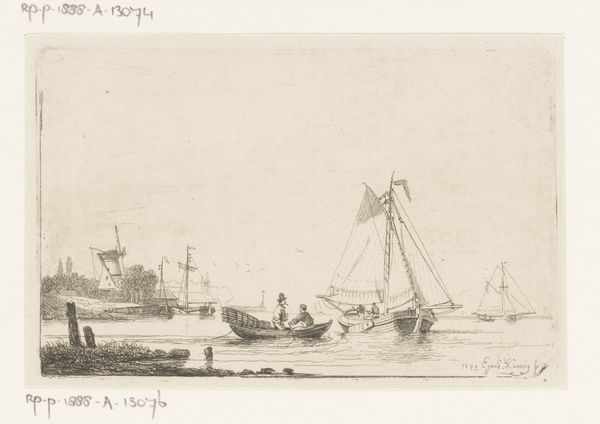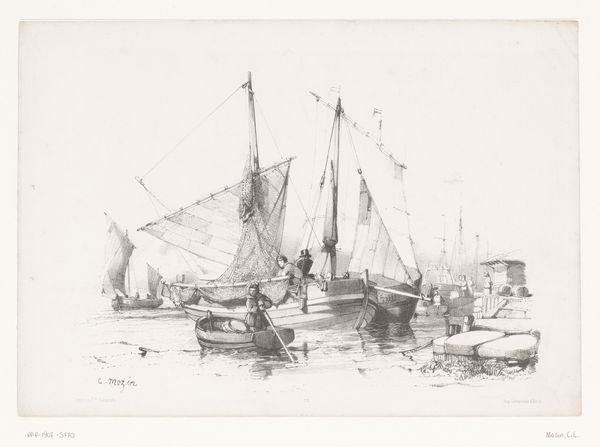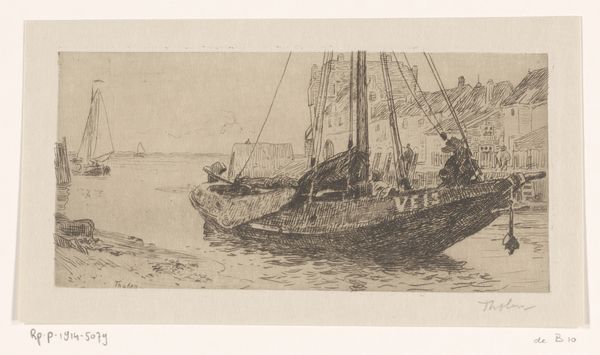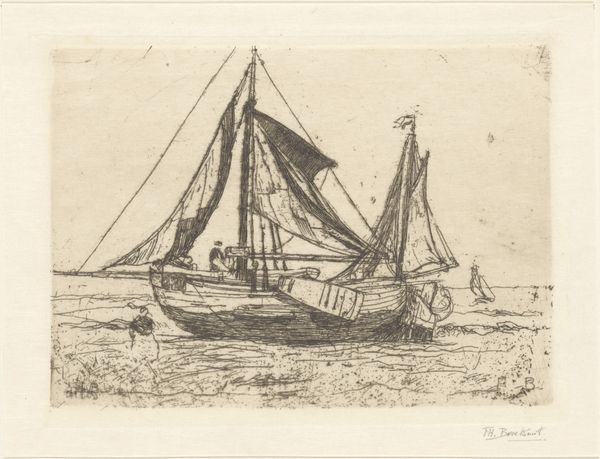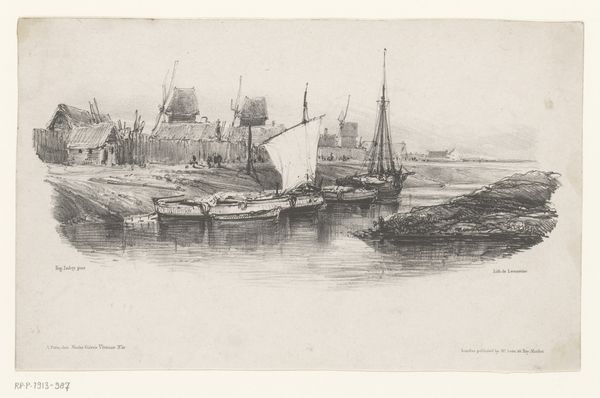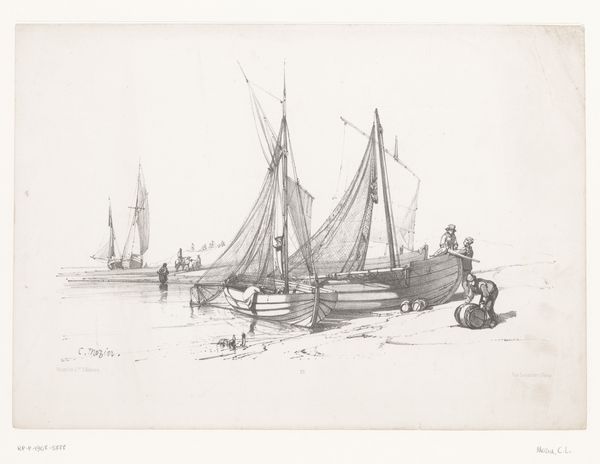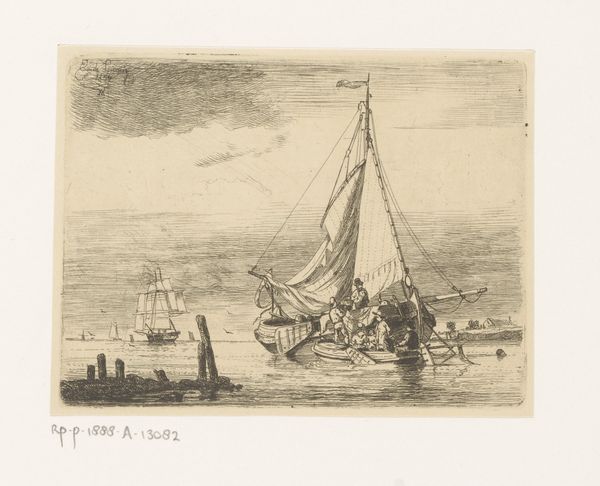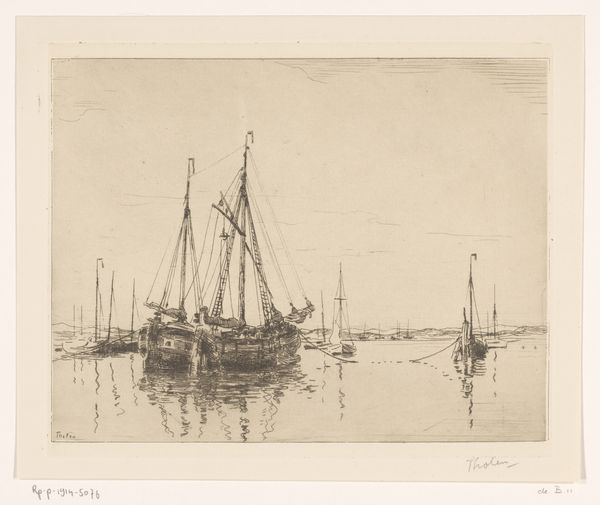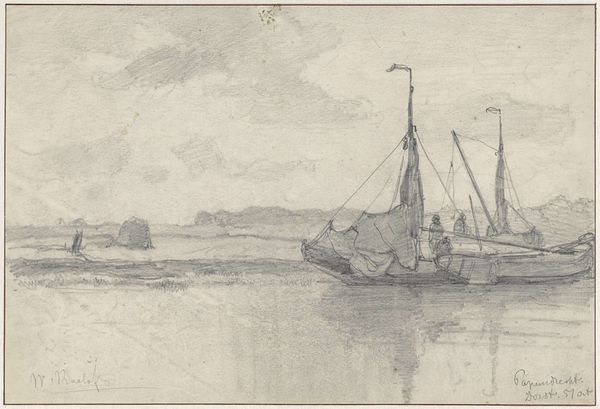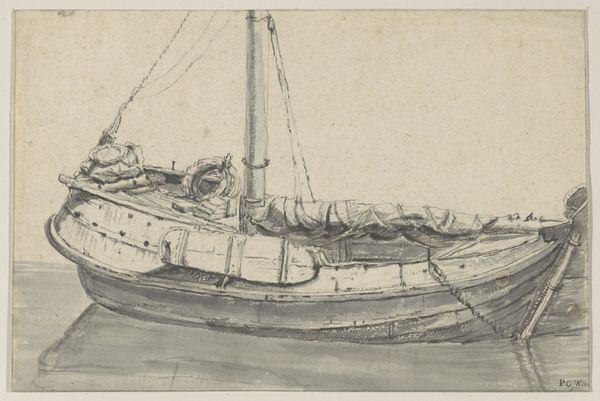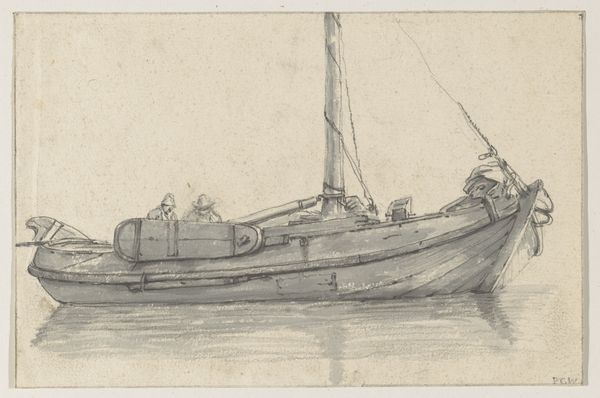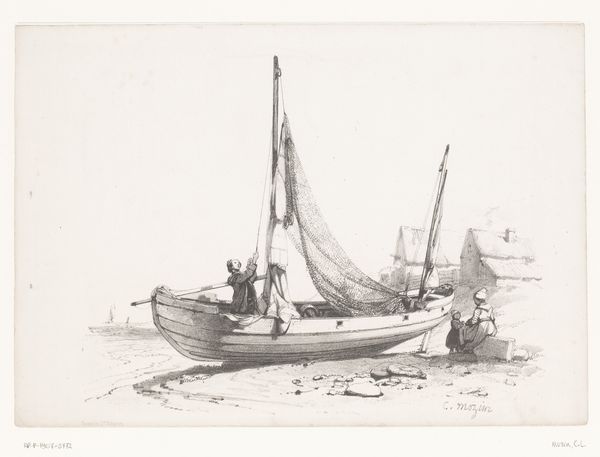
drawing, etching, ink
#
drawing
#
ship
#
etching
#
landscape
#
ink
#
ink drawing experimentation
#
pen-ink sketch
#
genre-painting
#
realism
Dimensions: height 113 mm, width 180 mm
Copyright: Rijks Museum: Open Domain
Curator: Ah, I’m drawn into this tranquil scene. It feels so delicate, so precise… a world caught in a breath. Editor: Absolutely. We're looking at an etching, possibly with ink, called "Two Sailing Ships on the Coast" by Egidius Linnig. It was likely created somewhere between 1831 and 1860 and resides now in the Rijksmuseum. What strikes me is how starkly the etching medium throws the fishing ships into focus. Curator: The etching, right. The light just bounces in such a whisper-y way off the ships and still water. The masts sort of scratch against the sky… gives a bit of a melancholy sigh. And they look almost ghostly in this monochromatic scale. What can you tell me about Linnig and the piece's larger context? Editor: Linnig was part of a burgeoning realist movement. Here, the everyday lives of fisherfolk meet a rising trend of marine painting. The details—the rigging of the ship, the placement of figures—point to labor and to a dependence on natural resources in a community's struggle to survive. Curator: Absolutely. Look how each pen stroke gives the sails an authentic billow; even the still water is alive, like holding your breath for a brief, eternal second. Editor: Indeed. But that “eternity” you feel likely belies a historical disruption. Consider the expansion of maritime trade routes and its entanglement with systems of capital, of nation-state development, and colonial enterprise. Images of calm coasts cloak, often erase, historical exploitation. Curator: A lot is buried beneath any harbor's lull. At first blush, there’s stillness. But it teases at a truth—as water and sky stretch on beyond frame—and this tension vibrates between presence and a profound sort of quiet. The kind that whispers, you know? Editor: I agree. The sketch draws you into contemplating what the ocean means for humanity, reflecting on maritime histories from precarity and promise to ecological destruction and back. In its seeming tranquility, this piece reminds us to look again, think deeper about human imprint and the sea. Curator: Well, thinking about what the ocean means, maybe sometimes, silence offers the biggest truths and boldest shouts… thank you! Editor: To both the loud absences and to possible reclamations, I thank you, too!
Comments
No comments
Be the first to comment and join the conversation on the ultimate creative platform.
